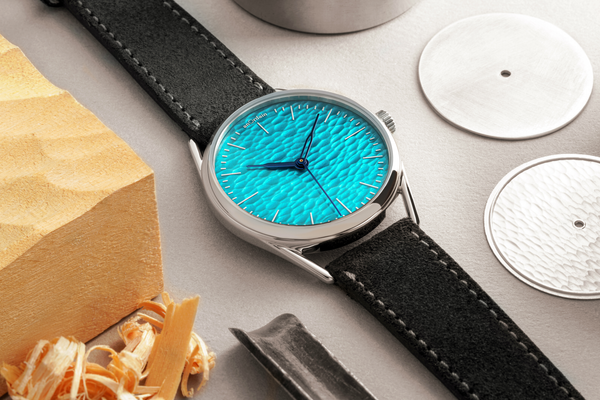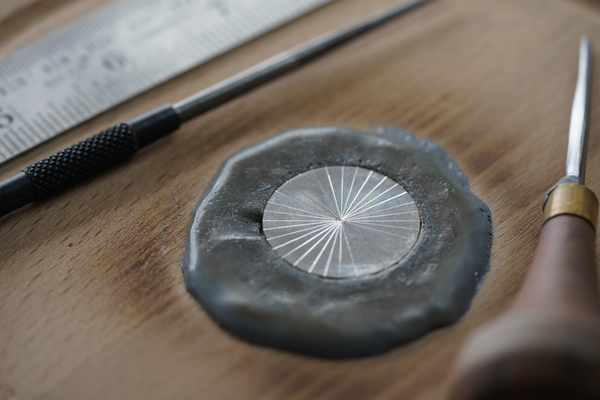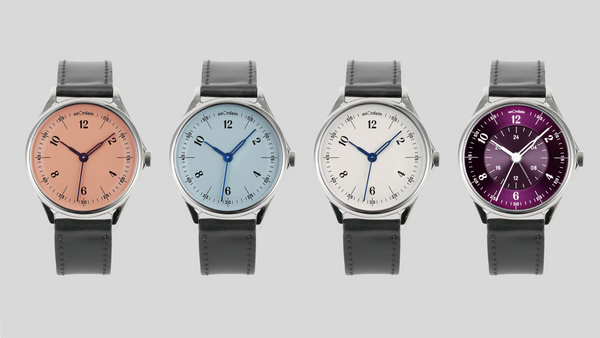Meet The Team: Morna Darling - Enameller
November 06, 2020
Meet The Team
Get to know the faces behind the watches of anOrdain. For our first issue, we talk to talented jeweller and enameller, Morna Darling.
Hi Morna! Tell us a bit about yourself and where you’re from?
I am originally from Edinburgh but have lived in Glasgow for 10 years. I came to study at the Glasgow School of Art and never left! It's great to live in a city like Glasgow which has so many galleries and museums and yet is so close to the beautiful countryside. I love being outdoors, hillwalking and taking trips to the beach with my dog Ari, so it's perfect!
When did you join the anOrdain team?
I started in April 2018, which was a few months before we launched our first model. It was a bit like being put in at the deep end, having never enamelled watch dials before, but it was very exciting to be a part of.

What attracted you to work with anOrdain?
Our first enameller Adam Henderson, who I studied with at GSA, introduced me to the company. It was so exciting to have a business in Glasgow that utilised some of the skills we had learned at university. Lewis creates a fantastic environment to work in and it was exciting to have the opportunity to develop these skills further. It's great to see how the team has grown since I first started.
Where did your interest in jewellery making stem from? Do you remember any early influences or have any prominent memories that particularly inspired you?
I love drawing and making things and always have. I'm very fortunate that my parents like to go to galleries and have an appreciation for craft. Growing up in Edinburgh meant that we could visit the Festival every year. We would visit Dazzle, which is a yearly exhibition of contemporary jewellery. Learning that people actually did this for a living was a very exciting prospect.
You are one of anOrdain's very talented enamellers! What was it that first appealed to you about working with the material?
The vast arrays of colours available! There are also so many different enamelling techniques and they can have so many different outcomes.
You practised jewellery enamel before starting an anOrdain. Was that something that you had explored during your time at GSA, or did you acquaint yourself with the practice later on?
I had a brief introduction to enamelling at university, but I didn't pursue it at the time. I love using colour in my own jewellery and, initially, I worked with different plastics and metal patination techniques, which eventually led to me experimenting with enamel. Before working for anOrdain I worked freelance for other jewellers including Caroline Finlay, who is a very experienced enameller. Her advice and encouragement cemented my love for the material.
I've been told that your favourite enamelling method is Cloisonné... What is it about this method that particularly appeals to you?
Cloisonné is a technique that uses thin wires to separate areas of enamel colour. It can be a time-consuming process, bending and shaping the fiddly wires to your design. However, it is very satisfying to have the control of placing each colour specifically where you want it when you add the enamel. The wires create such a beautiful line drawing on your piece.

Amazing! What would you say is the best part of your job?
The best part is definitely working with an incredibly talented team. We solve so many problems by talking things through with each other and patiently trying different solutions. I also just love coming into work and being able to make things with my hands using skills that I have learnt over the years.
What would you say is the biggest challenge?
Learning that things will and do go wrong. It can be incredibly frustrating when you spend a day - or even two! - on a dial and it doesn't work out. However, this probably makes the successful dials feel even more of an achievement!
Sometimes good things can come from things not always going to plan though...
Yes! The fumé dials were a bit of an accident in that they were originally inspired by a dial I made that went quite wrong, during our first attempt to enamel on silver. The dial warped so badly it became a dome! When we sanded it back to its final finish, there was a lot less enamel in the middle, creating the fumé's gradient effect. It was very much a team effort to work out how we could reliably and effectively produce it again.
For those of us who have never done so, are there any things you must never do when working with enamel?
The process can be quite scientific, especially when enamelling watch dials, so there is a whole list of dos and don'ts. However, a simple rule is to stay by the kiln when there's something in it - you don’t want to forget about it!
What would surprise people about working with enamel, if they don't know anything about it?
I think just the vast array of methods and outcomes that applying glass to metal can achieve might be surprising. But, on a more practical level, perhaps that it can take as little as a minute in the kiln to do it.
Follow Morna on Instagram at @mornadarlingjewellery
and find her online at http://www.mornadarlingjewellery.com


